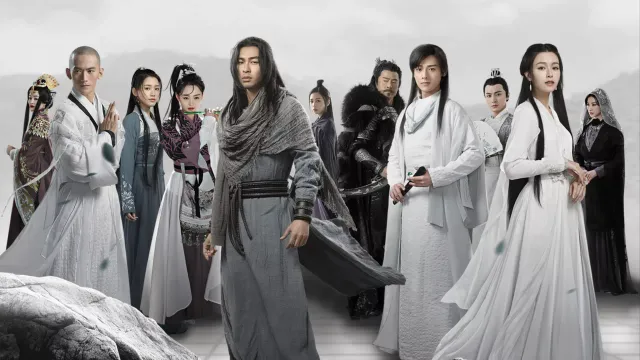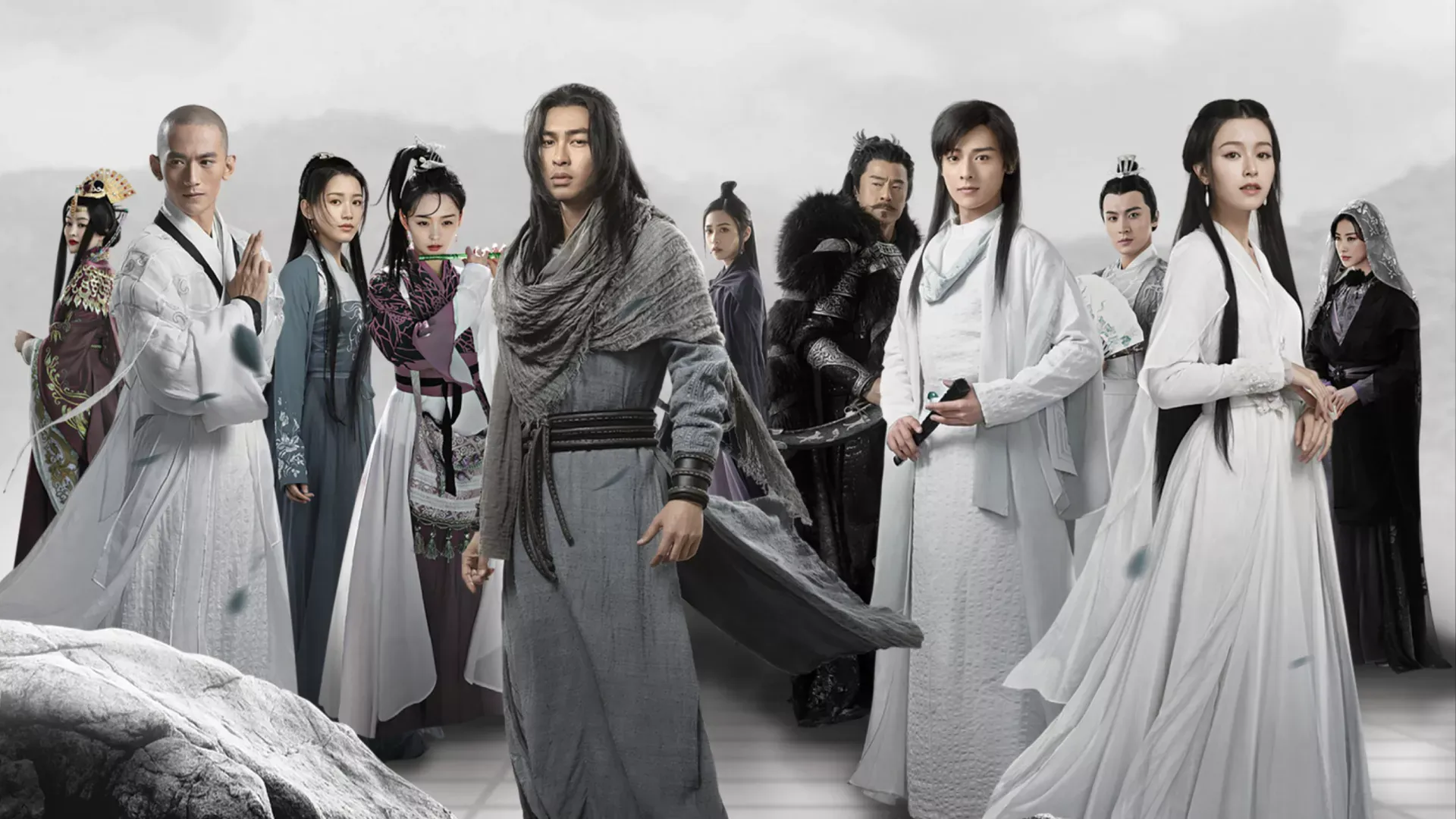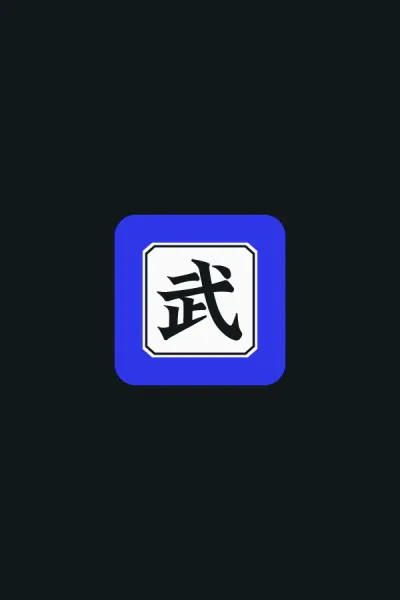Shaolin Order (simplified: 少林派, traditional: 少林派, pinyin: Shàolín Pài) is one of the most prestigious orthodox martial arts schools in the wulin, often mentioned alongside the Wudang School as the “Northern Shaolin, Southern Wudang” (北崇少林,南尊武当 – Běi Chóng Shàolín, Nán Zūn Wǔdāng). The order is known for combining Buddhist practice with martial arts training, following the principle of “Zen and martial arts as one” (禅武不二 – Chán Wǔ Bù Èr).
History
Foundation
The Shaolin Order traces its origins to the legendary Bodhidharma (达摩 – Dámó), who is said to have brought the foundational texts Tendon-trasmuting Sutra (易筋经 – Yìjīn Jīng) and Marrow Washing Classic (洗髓经 – Xǐsuǐ Jīng) from India. These texts became the basis for all subsequent Shaolin martial arts.
Development
The Shaolin Order developed as an orthodox martial arts school that emphasized both spiritual cultivation and martial training. The order’s martial arts are primarily external and hard-style techniques, focusing on hand-to-hand combat and staff techniques rather than weapons, in accordance with Buddhist principles of non-violence.
Organisation
Leadership structure
The Shaolin Order is led by an abbot (方丈 – Fāngzhàng) who oversees both spiritual and martial matters. The temple maintains a hierarchical structure with various departments:
- Dharma Hall (达摩院 – Dámó Yuàn): Specializes in martial arts research
- Arhat Hall (罗汉堂 – Luóhàn Táng): Handles external challenges and visitors
- Discipline Hall (戒律院 – Jièlǜ Yuàn): Oversees discipline and rules
- Scripture Repository (藏经阁 – Cángjīng Gé): Houses martial arts manuals and Buddhist texts
Generational naming
Shaolin monks follow generational naming conventions that vary by period:
- Northern Song: “Ling, Xuan, Hui, Xu, Kong” (灵、玄、慧、虚、空)
- Southern Song: “Ku, Tian” (苦、天)
- Yuan Dynasty: “Du, Kong, Yuan, Hui, Fa, Xiang, Zhuang” (渡、空、圆、慧、法、相、庄)
- Qing Dynasty: “Da, Jue, Guan, Hui, Cheng, Jing, Hua, Yan” (大、觉、观、晦、澄、净、华、严)
Martial arts abilities
Seventy-two Supreme Arts
The Shaolin Order is famous for its Seventy-two Supreme Arts (少林七十二绝技 – Shàolín Qīshí’èr Juéjì), a comprehensive collection of martial techniques that includes:
- Arhat Fist (罗汉拳 – Luóhàn Quán)
- Iron Cloth Shirt (铁布衫 – Tiěbùshān)
- Golden Bell Cover (金钟罩 – Jīnzhōngzhào)
- Vajra Finger (金刚指 – Jīngāng Zhǐ)
- One Finger Zen (一指禅 – Yīzhǐ Chán)
Core texts
The order’s martial arts are based on two fundamental texts:
- Tendon-trasmuting Sutra (易筋经 – Yìjīn Jīng): Focuses on physical conditioning and strength development
- Marrow Washing Classic (洗髓经 – Xǐsuǐ Jīng): Focuses on qi cultivation and spiritual purification
Notable members
Demi-Gods and Semi-Devils
- Sweeper Monk (扫地僧 – Sǎodì Sēng) - A mysterious monk in the Scripture Repository
- Xuanci (玄慈 – Xuáncí) - Abbot, known as “Tiger Subduing Arhat” (伏虎罗汉 – Fúhǔ Luóhàn)
- Xuanji (玄寂 – Xuánjì) - Discipline Hall Chief
- Xuannan (玄难 – Xuánnàn) - Dharma Hall Chief
- Xuanku (玄苦 – Xuánkǔ) - Qiao Feng’s martial arts master
- Xuandu (玄渡 – Xuándù) - Senior monk
- Xuantong (玄痛 – Xuántòng) - Senior monk
- Xuanbei (玄悲 – Xuánbēi) - Senior monk
The Legend of the Condor Heroes
- Tianming Chanshi (天鸣禅师 – Tiānmíng Chánshī) - Abbot
- Wuse Chanshi (无色禅师 – Wúsè Chánshī) - Arhat Hall Chief
The Heaven Sword and Dragon Sabre
- Jueyuan Dashi (觉远大师 – Juéyuǎn Dàshī) - Scripture Repository Guardian
- Du’e (渡厄 – Dù’è) - Dharma Hall Elder
- Dujie (渡劫 – Dùjié) - Dharma Hall Elder
- Dunan (渡难 – Dùnán) - Dharma Hall Elder
- Kongjian (空见 – Kōngjiàn) - One of the Four Divine Monks
- Kongwen (空闻 – Kōngwén) - One of the Four Divine Monks
- Kongzhi (空智 – Kōngzhì) - One of the Four Divine Monks
- Kongxing (空性 – Kōngxìng) - One of the Four Divine Monks
- Yuanzhen (圆真 – Yuánzhēn) - Also known as “Mixed Origin Thunder Hand” Cheng Kun
The Smiling, Proud Wanderer
- Fangzheng (方证 – Fāngzhèng) - Abbot
- Fangsheng (方生 – Fāngshēng) - Senior monk
The Deer and the Cauldron
- Huicong Chanshi (晦聪禅师 – Huìcōng Chánshī) - Abbot
- Chengguan (澄观 – Chéngguān) - Prajna Hall Chief
Locations
Shaolin Temple
The main temple is located on Mount Song (嵩山 – Sōngshān) in Henan Province. The temple complex includes:
- Great Hero Hall (大雄宝殿 – Dàxióng Bǎodiàn): The core building
- Discipline Hall (戒律院 – Jièlǜ Yuàn): Oversees discipline
- Bodhi Hall (菩提院 – Pútí Yuàn): Houses the Muscle Tendon Changing Classic
- Scripture Repository (藏经阁 – Cángjīng Gé): Houses the Seventy-two Supreme Arts manuals and Buddhist scriptures
- Dharma Hall (达摩院 – Dámó Yuàn): Specializes in martial arts research
- Arhat Hall (罗汉堂 – Luóhàn Táng): Handles external challenges
- Prajna Hall (般若堂 – Bōrě Táng): Studies martial arts from other schools
- Medicine King Hall (药王院 – Yàowáng Yuàn): Treats injuries
- Skill Selection Building (选艺楼 – Xuǎnyì Lóu): Where disciples choose which of the Seventy-two Supreme Arts to study
Relationships
Orthodox alliance
The Shaolin Order maintains close relationships with other orthodox schools, particularly the Wudang School. Together, they are considered the “Taishan Beidou” (泰山北斗 – Tàishān Běidǒu) of the martial world, representing the highest standards of orthodox martial arts.
Conflict with heterodox schools
The order often finds itself in conflict with heterodox schools and evil factions, serving as a bastion of orthodox martial arts and Buddhist principles. The order’s reputation for justice and discipline makes it a target for those who oppose orthodox values.
Behind the scenes
Historical foundation
The Shaolin Order in Jin Yong’s works draws extensively from the historical Shaolin Monastery’s martial arts traditions. Scholar Wang Guangyi notes that “Jin Yong’s depiction of Shaolin martial arts combines historical techniques like the Tendon-transmuting Sutra with fictional developments that reflect traditional Chinese concepts of Buddhist martial cultivation.”1 The order’s emphasis on spiritual discipline alongside martial training reflects the historical Shaolin principle of chan wu yi jia (禅武一家) - the unity of meditation and martial arts.
Literary archetype
The Shaolin Order serves as the definitive archetype of orthodox martial arts schools in wuxia fiction. Literary critic Zhang Wei observes that “Shaolin’s combination of Buddhist philosophy with martial prowess creates a model of righteous power that other orthodox factions either emulate or react against.”2 The order’s generational naming system and hierarchical structure have influenced countless other martial arts organisations in Chinese literature.
Cultural significance
The order’s emphasis on the Seventy-two Supreme Arts reflects traditional Chinese concepts of comprehensive martial arts education. Scholar Li Ming notes that “the number seventy-two has special significance in Chinese numerology, representing completeness and perfection, which aligns with Shaolin’s role as the ultimate orthodox martial arts institution.”3
Adaptation history
Shaolin’s portrayal has varied significantly across different adaptations. The 1982 television adaptation of The Legend of the Condor Heroes emphasized the order’s spiritual aspects, while the 2003 version focused more on its martial prowess. These variations reflect different interpretations of the balance between Buddhist practice and martial arts training.
See also
- Jin Yong factions
- Demi-Gods and Semi-Devils factions
- Wudang School – The other major orthodox school
- Seventy-two Supreme Arts – The order’s signature martial arts
- Muscle Tendon Changing Classic – One of the order’s core texts
- Marrow Washing Classic – One of the order’s core texts
- Mount Song – Location of the main temple
External links
- Shaolin Monastery on Wikipedia
- Shaolin Monastery (Chinese) on Chinese Wikipedia
Footnotes
-
Wang Guangyi, “Buddhist Martial Arts in Chinese Literature,” Religious Studies Quarterly 34, no. 1 (2010): 45-67. ↩
-
Zhang Wei, “Orthodox Martial Arts Schools in Wuxia Fiction,” Chinese Literature Studies 41, no. 2 (2013): 89-112. ↩
-
Li Ming, “Numerology in Chinese Martial Arts,” Cultural Studies 28, no. 3 (2011): 156-178. ↩


